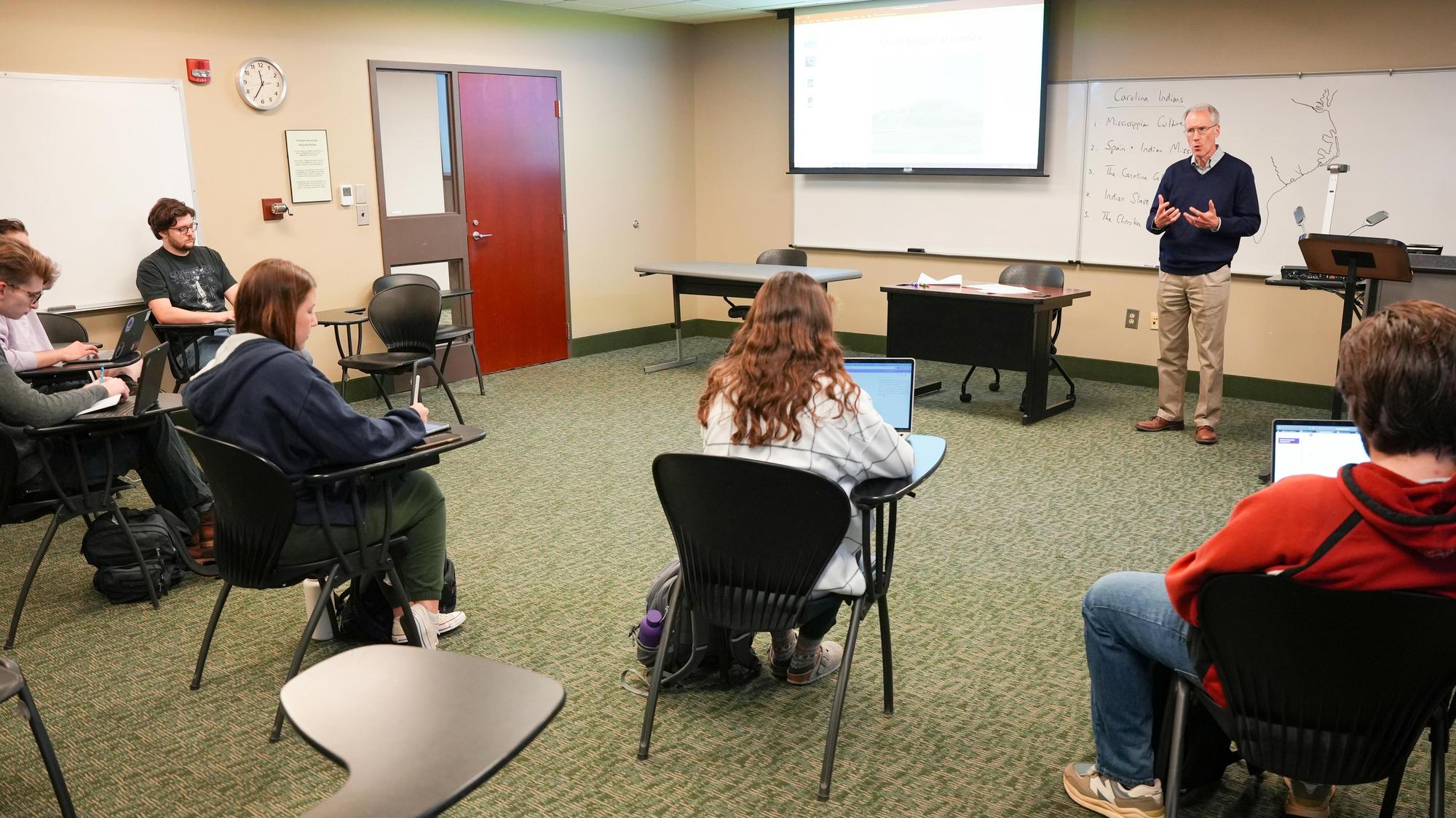History course illuminates complex early relations between Indigenous and European groups

Much of the 19th and 20th centuries was marked by cruelty, exploitation and violence directed toward Indigenous tribes by the burgeoning governments of the U.S. and Canada. But studying the earlier history of the continent reveals a more nuanced picture of the balance of power and the scope of interactions between Native American cultures and European settlers, invaders, missionaries and traders.
“The Indians weren’t just pathetic victims who got their land taken away,” said John Barrington, a professor of history, who taught a course on North American history this semester. “It’s important to emphasize that to make them fully human, or else they become objects of pity rather than respect, and a little bit of their humanity is taken away.”
Studying the area east of the Mississippi River, “students can get a sense of the extraordinary variety of Native American cultures in the ways that they adapted to local environments as different as the Arctic ice and the Caribbean,” he said.
Beginning with 16th-century interactions between the Vikings and the Inuit in the Central Arctic and the Spanish conquest of the Aztec Empire in Mexico, the course demonstrates that North American history prior to the War of 1812 was more than a two-sided clash between whites and Native Americans.
“With hindsight, we think of the whole history as ‘Europeans versus Indians,’” Barrington said. “But in fact, the usual dynamic was certain European groups allied with certain Indian groups against other European groups who were allied with different Europeans.”
With many different groups competing after arriving in North America from Europe “with interesting guns and other technologies,” Native American tribes could often play them off against each other and form alliances in their own rivalries with other Indigenous groups, said Barrington.
During the French and Indian War (1754-1763), different Indigenous tribes fought on both the British and French sides. Native groups also supported both the loyalist and patriot forces in the Revolutionary War.
“The Iroquois were particularly good at doing this,” Barrington said. “They played the French against the Dutch, and then when the English took over from the Dutch, they played the French against the English. There was a lot of self-interest at play among the different groups.”
The popular narrative of the first Thanksgiving as a celebration of harmony between the Pilgrims and the Wampanoag tribe of New England also glosses over historical nuance.
“One purpose of that cozy relationship is that the Wampanoags wanted the Pilgrims’ help against their traditional enemies in Massachusetts,” said Barrington. “That kind of dynamic was very common. Native groups had bitter rivalries with neighboring groups.”
After the War of 1812, population growth and technological advances tipped the balance of power in favor of the governments of the United States and Canada, said the professor, who is ending the course with the Trail of Tears in 1839.
“As the whites grow and advance, it’s just been the more tragic and more familiar story of being steadily dispossessed, one group after another,” he said.
Rachel Gambrell ’26 said that the course has helped her appreciate North American history on a deeper level.
“Especially in the early grades, we were taught that everybody was friends and there wasn’t much conflict,” said the history major. “As we got older, we learned that, obviously, there were conflicts. But this is the first time I’m learning about what actually happened.”
The course is in keeping with Furman’s mission of opening students’ minds to appreciate diverse cultures, said Barrington, while deepening their understanding of how those cultures – and their agendas – have changed over time.
“I want students to take away the sense of the complexity of history,” he said. “Creating heroes and villains really doesn’t get you to grips with the things that happen today. It’s worthwhile to think about conflicts from all points of view. Whatever the rights and wrongs, there are many actors at play, and you need to understand all of their motives – whether you like those motives or not.”